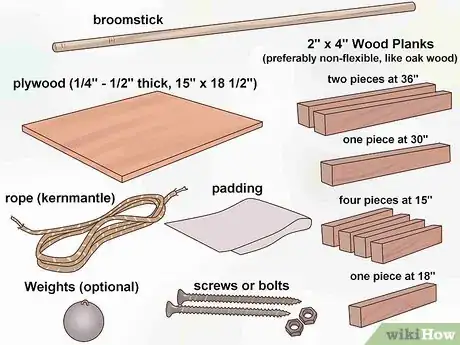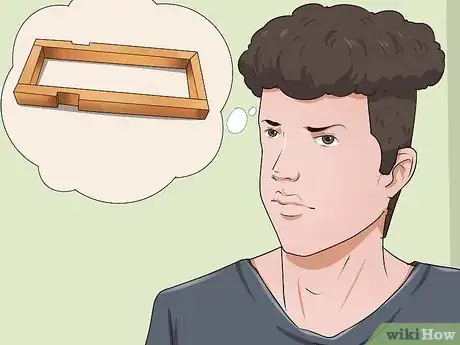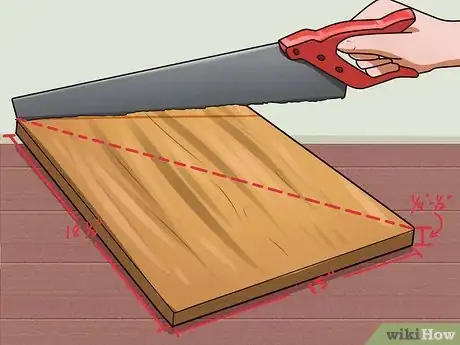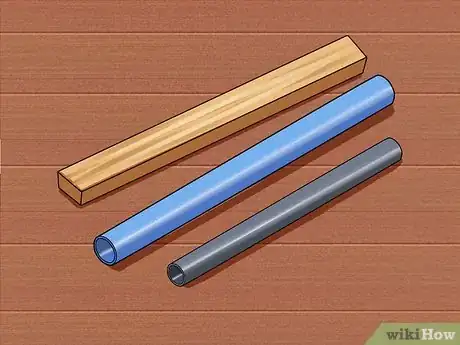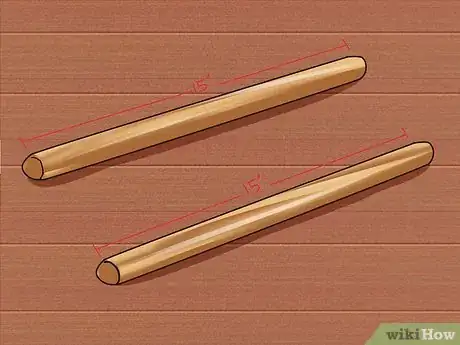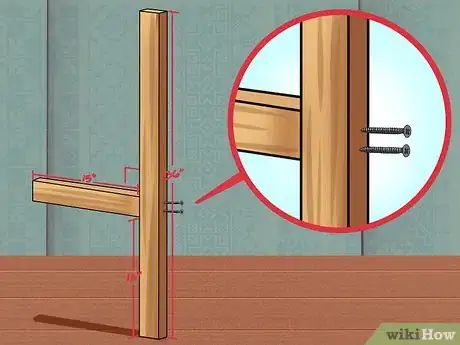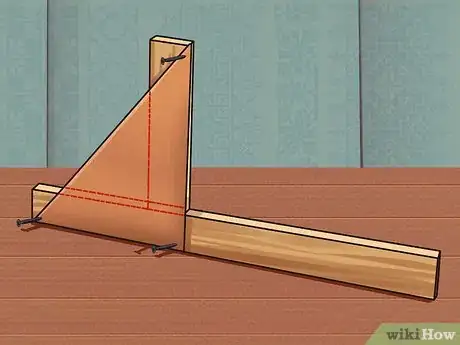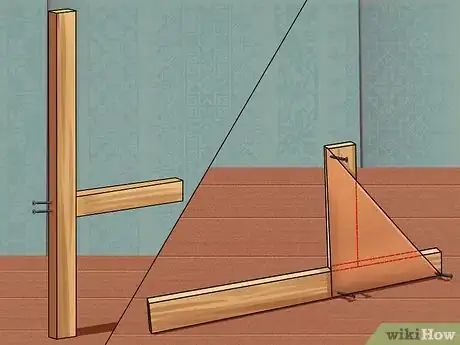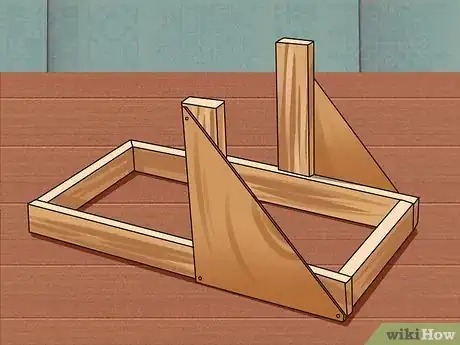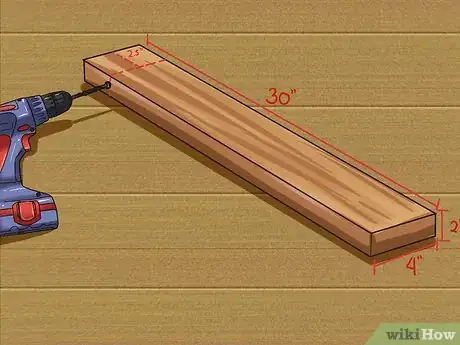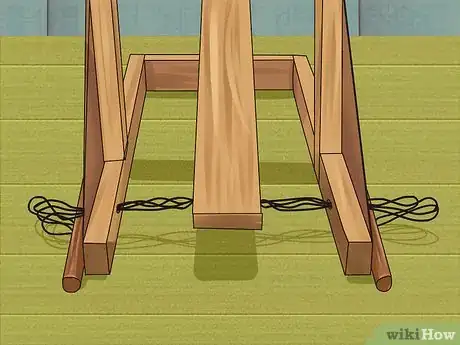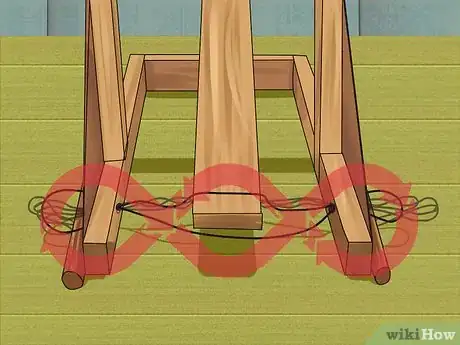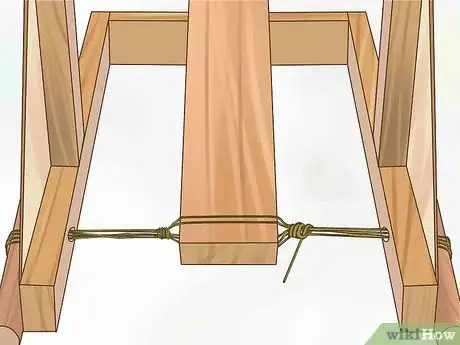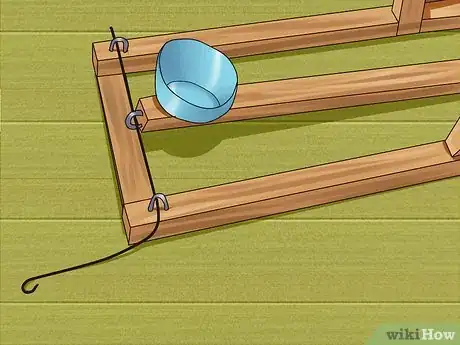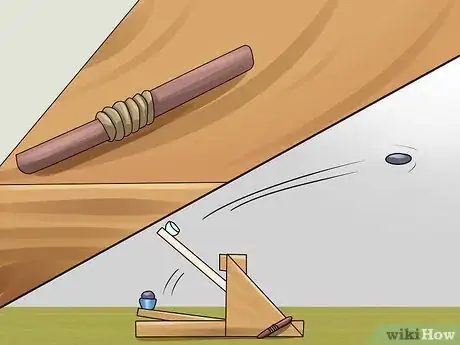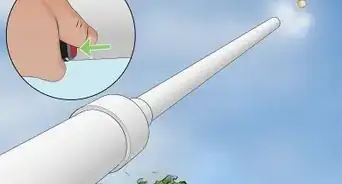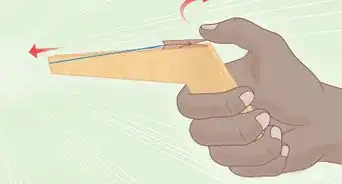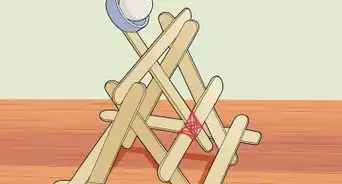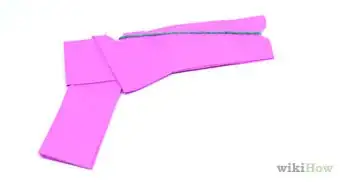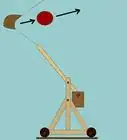wikiHow is a “wiki,” similar to Wikipedia, which means that many of our articles are co-written by multiple authors. To create this article, 78 people, some anonymous, worked to edit and improve it over time.
There are 7 references cited in this article, which can be found at the bottom of the page.
This article has been viewed 570,701 times.
Learn more...
The strength of a catapult could refer either to the sturdiness of the catapult frame and its ability to withstand use, or it could refer to the force with which the catapult launches projectiles. However, knowing how to build the frame of your catapult can actually help you understand how to build a sturdier machine and launch a projectile farther with even greater force. Using basic principles in engineering, you can create a large working catapult of your own, or you can use these principles to build a smaller scale model.
Steps
Preparing to Build
-
1Gather the materials. To ensure you build the best and safest catapult, find durable and strong materials to withstand the extreme forces your catapult will use when shooting objects. There are a great many materials you could use in the construction of your catapult, but at minimum you will need:
- Broomstick or crank
- Padding
- Plywood (1/4" to 1/2" thick, 15" by 18 and 1/2")
- Rope (strong, stretchy preferred,like kernmantle rope)
- Screws or bolts
- Weights (optional)
- Wood (preferably non-flexible, like oak wood)
- If using 2x4 planks collect: two pieces at 36", one piece at 30", four pieces at 15", and one piece at 18"[1]
-
2Contemplate base and weights. Since your catapult utilizes such powerful forces to eject its payload, you will need a strong and sturdy platform for launching as well as a strong and stable foundation. Poor foundation can throw off your aim or cause your catapult to fail.
- Torsion catapults, which is the technical name for a normal catapult, have historically been built with heavy, reinforced sides, as these would allow for heavier payload, greater tensile force, and greater stability.[2]
Advertisement -
3Cut your plywood supports. For the base of this catapult, you will use a 2x4 base supported with plywood triangles. To prepare your plywood supports, take one rectangular piece of plywood 1/4" to 1/2" thick, 15" by 18 and 1/2", and cut it diagonally into two equal triangles.
-
4Choose the right material for your throwing arm. Traditionally, spruce or fir wood were used for the throwing arm, as these woods were light and strong. Consult your local lumberyard to see if these are an affordable option and, if not, ask for some alternatives, two of which follow:
- Thick PVC pipe
- Metal pipe (lightweight, durable)
-
5Cut your torsion handles. You will need rope torsion to provide the launching force for your catapult. The more twists, the greater the torque, the more power your catapult will have. The amount of torsion (twisting) you can achieve is limited only by your strength and the strength of the materials you've used in making your catapult.[3] To make your torsion handles, take a broomstick and cut into two 15 inch segments.
Forming the Base
-
1Lay out the right side of your base. Position your 36" 2x4 flat, longways on your workbench or another suitable sturdy surface. Place your 18" 2x4 at a right angle to your 36" piece at 15" from the end of the 36" piece and screw them into place.[4]
-
2Attach your plywood triangle. Place it atop your 2x4 planks. The 18" side of your plywood will be vertical to your 36" plank, its base parallel with the 36" plank, and its diagonal will approximately span the distance between the two ends each 2x4 plank. Screw down your triangle securely to your 2x4s. This forms one base leg of your catapult.
-
3Lay out the left side of your base and affix your other triangular plywood piece. In the same fashion you constructed the right side, put your 36" and 18" 2x4 planks at a right angle 15" from the end of the long piece, and screw your triangular plywood piece into place atop the two 2x4 planks, with the base parallel to the 36" 2x4.
-
4Connect the left and right sides of the base. Using your two 15" long 2x4 planks, screw your left and right side, with the base of your triangle and base of your 36" 2x4 forming the bottom, leaving the hypotenuse (the diagonal) facing up. Use long screws to ensure your frame is sturdy.
- Do not use nails for this part of your frame. Nails are sensitive to the stress your catapult will exert, and could come loose over time.
Forming the Arm
-
1Turn your base right-side up. Now that you have your frame constructed, you will begin working on constructing the throwing arm. The top side of your catapult will have the 18" vertical boards pointing straight up, and your 36" boards laying flat edgewise.
-
2Screw in a cross brace between the sides.[5] At the topmost point of your 18" vertical boards, screw in another 18" piece between the two to form the cross brace of your catapult. The top of your cross brace should be level with the top of your vertical 18" 2x4 boards.
-
3Prepare the arm. Take your 30" 2x4 and measure 2.5" from one end. Drill a 1/2" centered hole clear on the narrow side of the board through the entire width of the 2x4.
-
4Attach a cup or launching basket. Screw a plastic cup to the center of the flat side of your 2x4. This should also be the opposite side from where you drilled a hole through the short side of your 2x4. Feel free to experiment with other materials and holding devices, like baskets, bowls, and cases.
-
5Drill a hole in the base. Drill a 1" hole in each side of the base into the end with your triangular support. This hole will need to be centered 6" from the end of the 36" piece where the end of your plywood triangle should also end. Then measure 2.5" up from the bottom edge of the device and drill.
-
6Pad the arm. The arm of your catapult operates by being pulled or winched back after applying tension to the rope that will be laced through the frame. Where the throwing arm of your catapult meets your cross brace, it's a good idea to add padding, like a blanket or several layers of wrapped rags. This will prevent your catapult from doing damage to itself when the arm is pulled back, released, and comes in contact with the cross brace.
Lacing the Arm
-
1Lace the rope. You will need about 20' of rope to complete the lacing process. Tie the rope around your broomstick handle, then take it through the hole in the right side of the base, through the hole you drilled in the arm of the catapult, out the opposite side of the base and back out to your second broomstick handle. Loop it around your second handle, then take it back through the frame to your first handle, where you will loop the cord again. Do this several times.[6]
- When choosing rope, look for strong material that has some stretch to it. Kernmantle rope, like parachute cord, is an excellent option.[7]
- Take your cord back and forth through the frame and arm several times to ensure your rope is securely fastened to the frame.
- While lacing, don't worry about keeping the rope tight. When you turn your handles, you will tighten the rope and apply launching force.
-
2Use an over under motion to complete lacing. After you have run your cord through the base of your catapult and throwing arm several times to secure it to the frame and arm, starting with your second handle, bring the end of your cord around the second handle in a loop that passes through the hole in your frame and under the throwing arm, passing through to the hole on the other side to loop around your first handle. Continue this motion, following each over-lacing of the arm with an under-lacing with each pass of the cord through the frame.
- This should form a figure eight shape with your rope where you can clearly see the rope twisting together. The more twists you add through your over and under motion, the more tension and greater force your catapult will have.
- After securing your rope to arm and frame, you should not continue threading your line through the throwing arm. To achieve the tension necessary to throw a projectile, you must finish lacing by going through the frame holes, around the broom handles in loops, and over and under the throwing arm.
- Make sure your loops stay anchored around your broom handles.
-
3Knot the end of your cord to the side of the arm. When you are reaching the end of your rope, wrap it around the strings to one side of your catapult, then cross over and do the same on the other side. Now you can knot the end of your cord, ensuring it won't come lose with the added benefit of keeping your rope orderly.
-
4Add a catch for your throwing arm. As you twist your handles, the torsion of the rope will cause your throwing arm to ascend until its tension holds it against the cross brace. First allow your arm to rest fully back in the launching position and judge where to best install your catch, then drill a hole and insert your hook.
- By installing a catch to the rear of your frame, you won't have to pull the arm back to launch your payload. Simply release the catch after applying tension, and your arm will spring forward, stopping at the cross brace and launching your payload.
-
5Arm your catapult and apply torsion. Your handles should now be off to each side of your catapult base, parallel to your 36" pieces and attached to the frame and throwing arm by rope. Turn the handles to create torsion in the rope.[8] This will give the catapult tension, simply add a payload to your cup, wind your broomstick cranks, release your catch and fire.
Community Q&A
-
QuestionCan I make this catapult on a smaller scale?
 Community AnswerYes, as long as you use similar proportions. Keep in mind that a smaller catapult will not be very strong, nor will it be able to throw as far.
Community AnswerYes, as long as you use similar proportions. Keep in mind that a smaller catapult will not be very strong, nor will it be able to throw as far. -
QuestionCan I use rubber bands as a substitute for the rope?
 Community AnswerIt is not recommended. The (slightly flexible) rope is good for strength and support. It gives the catapult momentum when it is tightly coiled.
Community AnswerIt is not recommended. The (slightly flexible) rope is good for strength and support. It gives the catapult momentum when it is tightly coiled. -
QuestionWhat is needed to make a catapult capable of throwing more weight?
 Community AnswerStronger stature and a stronger material to pull back the arm of the catapult.
Community AnswerStronger stature and a stronger material to pull back the arm of the catapult.
Warnings
- Store this device in a safe place; children playing with a catapult without supervision could harm themselves or others.⧼thumbs_response⧽
- Keep your face out of the swing of the arm of the catapult⧼thumbs_response⧽
Things You'll Need
- 2x4s: two pieces at 36", one piece at 30", four pieces at 15", and one piece at 18".
- Rectangular piece of plywood: 1/4" to 1/2" thick, 15" by 18 and 1/2", cut diagonally into two equal triangles.
- Broomstick cut into two 15 inch segments (for rope)
- Hook or clasp (for arm)
- Hammer
- Drill (with assorted bits)
- Rope (strong, stretchy preferred, like kernmantle rope)
- Screwdriver
- Screws (two and a half inch long, suggested)
- Weights (optional)
References
- ↑ http://www.stormthecastle.com/catapult/the-wyvern-catapult-1.htm
- ↑ https://sites.google.com/site/physicsofcatapults/home/how-a-catapult-works-the-physics/mangonel
- ↑ http://www.real-world-physics-problems.com/catapult-physics.html
- ↑ http://www.stormthecastle.com/catapult/the-wyvern-catapult-2.htm
- ↑ https://sites.google.com/site/physicsofcatapults/home/history-of-catapults
- ↑ http://www.stormthecastle.com/catapult/the-wyvern-catapult-3.htm
- ↑ http://www.siege-engine.com/TorsionAndFrames.shtml
- ↑ https://sites.google.com/site/physicsofcatapults/home/how-a-catapult-works-the-physics/mangonel
About This Article
To build a strong catapult, build a base supported with plywood triangles, with a cross brace at the top. Attach a launching basket to the throwing arm, and attach the arm to the base at one end with a long piece of rope that is wrapped through the frame and around the arm in an over-under-over pattern. Secure the rope on either side with a piece of a broom handle and attach a catch to the other end of the arm. Engage the catch, then twist the handles to tighten the catapult. When you release the catch, the arm should fly forward, releasing the payload. If you want to learn how to pad your catapult so it doesn't get damaged, keep reading the article!
